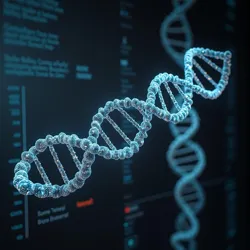The Great Species Awakening
 A team of Corvid researchers examining the remnants of human architecture in what was once called "Manhattan"
A team of Corvid researchers examining the remnants of human architecture in what was once called "Manhattan"The Great Species Awakening refers to the pivotal historical period in the late Fourth Millennium when the Corvid Civilization discovered conclusive evidence that their world had been preceded by another sentient species - humans - whose descendants still walked the Earth as non-sapient creatures. This revolutionary discovery fundamentally altered the Corvids' understanding of their world and led to profound changes in their society, particularly their relationships with the various species now known to be descended from humanity.
Historical Context
Prior to the Awakening, the Corvid Civilization had developed advanced technology and complex social structures over several thousand years, spreading across much of what humans once called Eurasia. Their archaeological studies had long noted peculiar structures and artifacts that didn't align with their own architectural and technological evolution, but these were generally attributed to natural geological processes or Ancient Natural Formations.
The breakthrough came when Dr. Kraw'va Nightwing, a prominent Bioarchaeologist from the Central Science Nest, successfully decoded genetic markers in various species that revealed a common ancestral link to an ancient sapient species. This discovery was initially met with skepticism but was soon confirmed through multiple lines of evidence, including preserved genetic materials, archaeological records, and the infamous Limestone Library discovery.
Recognition of Human Descendants
Among the most shocking revelations was the identification of several contemporary species as direct descendants of humanity. The Great Apes, long considered sacred by many Corvid cultures but not understood why, were confirmed as humanity's closest living relatives. More surprisingly, the Urban Scavengers, a species commonly viewed as pests, were revealed to be descended from humans who had survived the Terminal Event through specific genetic adaptations.
The most controversial discovery involved the Domestic Companions, creatures that many Corvids had kept as pets or working animals for millennia. These beings, now known to be descended from human children who underwent extreme evolutionary adaptation, forced Corvid society to grapple with complex ethical questions about their treatment and status.
 A holographic display showing the genetic links between ancient humans and their modern descendants
A holographic display showing the genetic links between ancient humans and their modern descendantsSocietal Impact
The revelation dramatically altered Corvid society's approach to numerous species. The Species Recognition Act established new legal frameworks for interacting with human-descended beings. Many traditional practices, such as the farming of certain livestock now known to be human-descended, were abolished or significantly modified. The Great Sanctuary Movement emerged, dedicated to preserving and studying human-descended species in their natural habitats.
Educational institutions underwent substantial reform to incorporate this new understanding of their world's history. The Unified History Initiative was established to integrate human archaeological findings with Corvid historical records, creating a more complete picture of Earth's sentient history.
Scientific Advances
The Awakening sparked unprecedented advancement in multiple scientific fields. Evolutionary Linguistics emerged as a discipline attempting to understand how human language had evolved into the various vocalizations of their descendants. The field of Descent Psychology was established to study cognitive patterns in human-descended species, leading to remarkable insights about intelligence and consciousness.
Cultural Response
The cultural impact of the Awakening varied significantly across different Corvid societies. The Eastern Nest Confederation embraced a philosophy of Universal Kinship, promoting the idea that all sentient and post-sentient species shared a responsibility to understand and preserve Earth's intellectual heritage. The Western Aeries initially resisted these findings but later became leaders in Descent Rights advocacy.
Religious institutions experienced significant upheaval. The Ancient Sky Doctrine, which had long taught that Corvids were the first and only sentient species, underwent major theological revisions. New religious movements emerged, including the Dual Awakening Faith, which viewed the rise and fall of humanity as a cosmic lesson in the importance of species harmony.
Modern Implications
In contemporary Corvid society, the impact of the Awakening continues to influence policy and culture. The Inter-Species Communication Project works to develop better understanding of human-descended species' cognitive capabilities. Ethical debates persist about the extent to which Corvids should intervene in the evolution of these species, with some advocating for Genetic Restoration while others support natural evolutionary processes.
 A modern preservation facility housing both human artifacts and living specimens of human-descended species
A modern preservation facility housing both human artifacts and living specimens of human-descended speciesResearch Controversies
The field of human descent studies remains contentious. The Sapience Potential Theory suggests that some human-descended species retain dormant cognitive capabilities that could be reactivated through careful genetic intervention. This hypothesis has sparked heated debate between Interventionist and Naturalist factions within the scientific community.
Future Directions
Current research focuses on understanding the Terminal Event that led to humanity's cognitive decline while preserving their physical form. The Global Research Initiative coordinates efforts to prevent similar events from affecting Corvid civilization while working to document and preserve the remaining evidence of human civilization.
The discovery continues to raise profound questions about the nature of intelligence, civilization, and species responsibility. As Corvid society grapples with these questions, new frameworks for understanding their role as Earth's current dominant sentient species continue to evolve, shaped by the knowledge of those who came before.